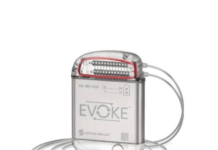Penumbra announced positive results from its landmark STORM-PE randomised controlled trial.
The study found that the use of the company’s computer-assisted vacuum thrombectomy (CAVT) system, a form of mechanical thrombectomy (MT), with anticoagulation achieved superior reduction in right heart strain compared to anticoagulation alone in patients with acute intermediate high-risk pulmonary embolism (PE).
Related: Adagio Medical reports findings from ventricular tachycardia study
Penumbra’s Lightning Flash is a mechanical thrombectomy system that addresses venous and pulmonary thrombus. It features Penumbra’s Lightning Intelligent Aspiration technology and the latest dual clot detection algorithms. Those algorithms utilise both pressure- and flow-based processes to detect blood clot and blood flow.
The company completed enrollment in the study in June. Investigators shared findings at the 2025 Transcatheter Cardiovascular Therapeutics (TCT) conference in San Francisco.
“These findings mark a pivotal step in advancing care for PE, providing the strongest evidence to date that advanced therapy with CAVT can rapidly and safely improve recovery of the right heart compared to conventional anticoagulation therapy,” said Dr. Robert Lookstein, co-global principal investigator of the STORM-PE RCT and professor of radiology and surgery at Icahn School of Medicine at Mount Sinai. “STORM-PE supports the role of CAVT as a more effective therapeutic option for intermediate-high risk patients and will evolve the paradigm of care by delivering rapid relief with a comparable safety profile to anticoagulation alone.”
STORM-PE enrolled 100 participants across 22 international sites. Patients treated with CAVT demonstrated a greater reduction in right-to-left ventricular (RV/LV) diameter ratio within 48 hours. Nearly 80% of patients had a positive treatment effect with CAVT, compared to 51.9% with anticoagulation alone.
“What’s particularly compelling is that a significantly greater portion of patients treated with CAVT achieved normalization of RV/LV ratio within 48 hours — a critical indicator of right heart recovery — without an increase in complications,” said Dr. Rachel Rosovsky, co-global principal investigator of STORM-PE RCT, hematologist at the Massachusetts General Hospital and associate professor of medicine at Harvard Medical School. “These findings represent a meaningful advancement in optimizing early interventions in patients with intermediate-high risk PE, and we look forward to exploring how changes in RV/LV ratio correlate with other clinical and functional outcomes.”
Penumbra reported a comparable rate of major adverse events within seven days between groups (4.3% with CAVT, 7.5% for anticoagulation). Those events included a composite of PE-related mortality, recurrent PE, clinical deterioration requiring rescue therapy and major bleeding.
“For the first time, we have prospective, level 1 evidence demonstrating that CAVT with anticoagulation is superior to anticoagulation alone,” said James F. Benenati, MD, FSIR, chief medical officer at Penumbra. “Combined with Penumbra’s strong prospective data from STRIKE-PE, this randomized evidence from the STORM-PE trial will play a critical role in advancing PE care and supporting the inclusion of CAVT in future treatment guidelines.”






